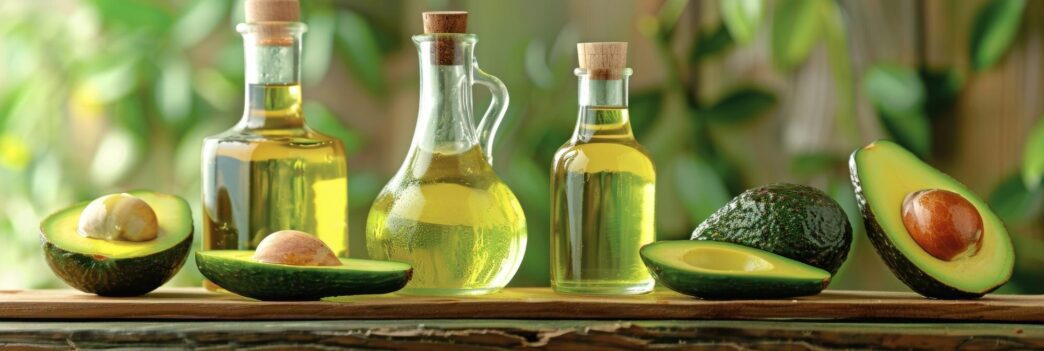A Quick Takeaway
The Story Behind the Trend
How to Make It Work for You
The Community View
Choosing the right cooking oil is a pivotal decision for anyone looking to optimize their dietary health, impacting everything from heart function to inflammation levels. With a myriad of options lining grocery store shelves, understanding which oils genuinely contribute to wellness and how to use them effectively is crucial for home cooks and health enthusiasts alike. This article will demystify the world of cooking oils, revealing the healthiest choices based on their fat profiles, smoke points, and nutritional benefits, empowering you to make informed decisions that support a vibrant, healthy lifestyle.
The Science of Fats: Understanding Your Oils
Not all fats are created equal, and the type of fat an oil contains is the primary determinant of its health impact. Dietary fats are broadly categorized into saturated, monounsaturated, and polyunsaturated fats, each playing distinct roles in the body. While saturated fats have historically been viewed with caution, current research suggests that their impact depends on the specific type and overall dietary context.
Monounsaturated fats (MUFAs) and polyunsaturated fats (PUFAs) are generally considered heart-healthy. MUFAs, found abundantly in olive and avocado oils, can help lower LDL (“bad”) cholesterol levels. PUFAs include essential omega-3 and omega-6 fatty acids, which the body cannot produce on its own and are vital for brain function, cell growth, and reducing inflammation.
Key Factors in Selecting a Healthy Cooking Oil
Beyond the fat profile, several other factors influence an oil’s suitability for different cooking applications and its overall health benefits. Considering these elements ensures you’re not only choosing a nutritious oil but also using it in a way that preserves its integrity.
Smoke Point: A Critical Consideration
The smoke point of an oil is the temperature at which it begins to break down and produce smoke. When an oil reaches its smoke point, its beneficial compounds can degrade, and it can release free radicals and acrolein, a potentially harmful compound. Matching the oil’s smoke point to your cooking method is therefore essential for both health and flavor.
Processing and Refining
The way an oil is processed significantly affects its nutrient content and stability. Unrefined oils, like extra virgin olive oil, undergo minimal processing, retaining more of their natural antioxidants, vitamins, and distinctive flavors. Refined oils, such as many vegetable and canola oils, are typically subjected to high heat and chemical solvents to create a neutral-flavored, high-smoke-point product, but often at the cost of some nutrients.
Top Healthiest Cooking Oils and Their Uses
Based on their beneficial fat profiles, high smoke points, and rich nutrient content, several oils stand out as excellent choices for a health-conscious kitchen.
Extra Virgin Olive Oil (EVOO)
Extra virgin olive oil is a cornerstone of the Mediterranean diet, renowned for its high concentration of monounsaturated fats and powerful antioxidants like polyphenols. These compounds are linked to reduced inflammation and improved cardiovascular health. EVOO has a moderate smoke point (around 375°F/190°C), making it ideal for sautéing, baking, roasting vegetables, and as a finishing oil for dressings and dips. It’s best to avoid using EVOO for very high-heat searing or deep-frying to preserve its delicate compounds.
Avocado Oil
Avocado oil is a remarkably versatile and healthy option, boasting an exceptionally high smoke point of up to 520°F (270°C). This makes it perfect for high-heat cooking methods such as searing, grilling, stir-frying, and deep-frying, where other oils might break down. Like olive oil, it’s rich in heart-healthy monounsaturated fats and contains vitamin E, a potent antioxidant. Its mild, buttery flavor also makes it suitable for salad dressings and marinades.
Canola Oil (Rapeseed Oil)
Canola oil, derived from the rapeseed plant, offers a balanced fatty acid profile, including a good ratio of omega-3 to omega-6 fatty acids, which is beneficial for overall health. It has a moderate-to-high smoke point (around 400°F/204°C) and a neutral flavor, making it a versatile choice for everyday cooking, baking, and light frying. When choosing canola oil, look for expeller-pressed varieties to minimize chemical processing.
Grapeseed Oil
Grapeseed oil is a byproduct of winemaking and is high in polyunsaturated fats, particularly linoleic acid (an omega-6 fatty acid). It has a relatively high smoke point (around 420°F/215°C) and a very light, neutral flavor, making it excellent for baking, sautéing, and dressings where you don’t want the oil to impart a strong taste. However, its high omega-6 content means it should be balanced with other omega-3 rich foods in the diet.
Sesame Oil
Sesame oil, especially toasted sesame oil, is prized for its distinct nutty flavor rather than its smoke point. Toasted sesame oil is best used as a finishing oil or in dressings for Asian-inspired dishes, adding a burst of flavor without needing to be heated. Untoasted (light) sesame oil has a higher smoke point and can be used for light sautéing, but its primary use is for flavor enhancement.
Flaxseed Oil and Walnut Oil
These oils are exceptionally rich in alpha-linolenic acid (ALA), a plant-based omega-3 fatty acid crucial for heart and brain health. However, both flaxseed oil and walnut oil have very low smoke points and are highly susceptible to oxidation when heated. They are best reserved for unheated applications such as salad dressings, drizzling over cooked dishes after plating, or blending into smoothies to maximize their nutritional benefits.
Oils to Use with Caution or Avoid
While the focus is on beneficial oils, it’s equally important to be aware of those that may pose health risks when consumed regularly or in large quantities. Highly processed vegetable oils like corn oil, soybean oil, and cottonseed oil are often high in omega-6 fatty acids and can contribute to an imbalanced omega-3 to omega-6 ratio, potentially promoting inflammation. Additionally, partially hydrogenated oils, which contain harmful trans fats, should be strictly avoided due to their strong links to heart disease.
Preserving the Potency of Your Oils
Proper storage is vital to maintain the quality and health benefits of your cooking oils. Light, heat, and air are enemies of oil, causing them to oxidize and go rancid. Store oils in a cool, dark place, ideally in opaque bottles. Extra virgin olive oil, in particular, benefits from being kept in a dark cupboard or pantry rather than next to the stove, where heat fluctuations can degrade its delicate compounds.
A Balanced Approach to Your Kitchen Oils
Navigating the world of cooking oils doesn’t have to be complicated. By understanding the unique properties of different oils—their fat composition, smoke points, and processing—you can make choices that enhance both the flavor of your food and your overall health. Incorporating a variety of healthy oils into your diet, chosen for their specific applications, is the best strategy for reaping their full nutritional benefits and supporting a vibrant, wellness-focused lifestyle. Prioritize unrefined options, pay attention to smoke points, and always store your oils correctly to ensure their longevity and potency.







